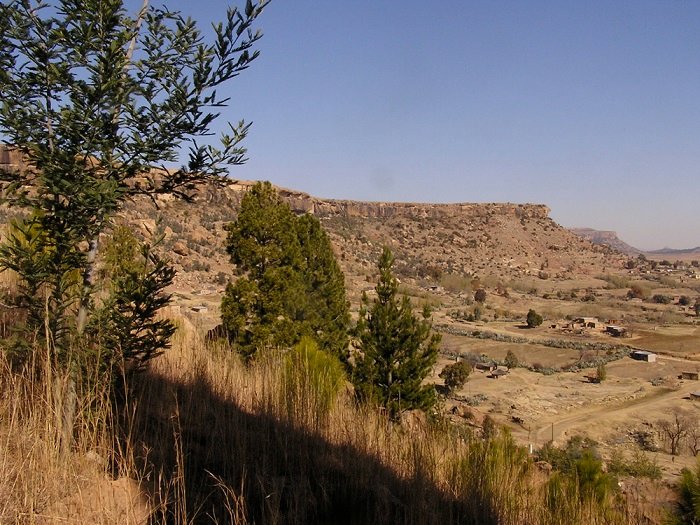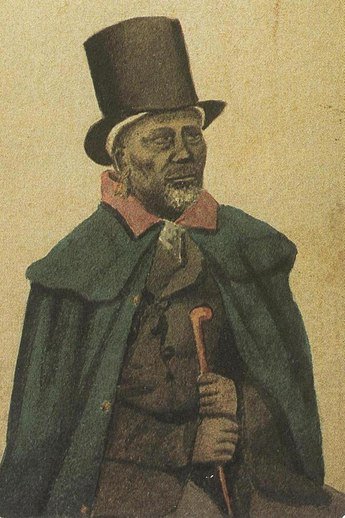Have you heard of the famous “Mountain of the Night”?
Thaba-Bosiu, meaning “Mountain of the Night,” is a significant historical sandstone plateau in Lesotho, serving as the capital and stronghold of King Moshoeshoe I and the Basotho people, and a National Monument. It’s a place of remembrance and holds great cultural and historical importance.
Thaba-Bosiu is considered the birthplace of the Basotho nation, as King Moshoeshoe I established a formidable fortress there, protecting his people during the Lifaqane (Mfecane) war.
The plateau is home to the royal cemetery where King Moshoeshoe I and his successors are buried, along with other Sotho royals and dignitaries.

At the Thaba Bosiu Plateau in Lesotho, you can explore historical sites, enjoy outdoor activities like hiking and mountain biking, and experience Basotho culture through museums, cultural villages, and traditional crafts. And because it is mostly a historical site, you are more inclined to connect to nature and your African roots.
Some fun things you can do while you are there, include:
- Exploring the site where Moshoeshoe I, the founder of the Basotho nation, established his kingdom and learn about the history of the Basotho people.
- Immersing yourself in the history and culture of the Basotho through interactive multimedia presentations at the site.
- Pay respects at the royal cemetery where Moshoeshoe I and his successors were buried at the Basotho Cemetery and Graves.
- Explore the ancient rock paintings and learn about the history of the local Basotho people at Kome Cave Dwellings
- Discover the rich heritage of the Basotho people through the museum’s exhibits and interactive displays, the Morija Museum & Archives.
- Visit the Basotho Hat, a cultural shopping destination, and experience traditional music, dance, and culinary delights.
Some of the Outdoor Activities you should explore at the Thaba Bosiu include:
- The Pony-trekking, exploring the landscape on horseback.
- Experiencing the breathtaking view of the Lion Rock Mountain
- Exploring the surrounding mountains through Hiking and Biking Trails and hills on foot or by bike.
- Witness the breathtaking 192metre drop of Maletsunyane Falls, and soak in the tranquil beauty of the area
- Enjoy the serene ambiance and stunning scenery of Mohale Dam.
- Explore the extraordinary rock pinnacle of Qiloane, which reputedly inspired the design of the traditional Basotho mokorotlo straw hat.

So, you must make it a point to visit the Plateau of Thaba Bosiu in Lesotho.
About Thaba Bosiu
Thaba Bosiu is a constituency and sandstone plateau with an area of approximately 2 km sq. (0.77 square miles) and a height of 1,804 meters above sea level. It is located between the Orange and Caledon Rivers in the Maseru District of Lesotho, 24 km east of the country’s capital Maseru. It was once the capital of Lesotho, having been King Moshoeshoe’s stronghold.
Moshoeshoe I was the first king of Lesotho. He was the first son of Mokhachane, a minor chief of the Bamokoteli lineage, a branch of the Koena (crocodile) clan in Lesotho. In his youth, he helped his father gain power over some other smaller clans. In 1820, at the age of 34, Moshoeshoe succeeded his father as the Bamokoteli chief and formed his own clan. He and his followers settled at the Butha-Buthe Mountain. He became the first and longest-serving King of Lesotho in 1822.

Thaba Bosiu was used as a hideout by King Moshoeshoe I and his subjects after they migrated from Butha-Buthe in 1824 escaping the ravages of the Difaqane/Mfecane Wars. The plateau formed a natural fortress which protected the Basotho in times of war. Moshoeshoe I and his people took occupation of this mountain in July 1824. He named it Thaba Bosiu (loosely translated – Mountain at Night) because he and his people arrived at night. To intimidate his enemies, he spread news that the mountain grew larger at night. Moshoeshoe was able to offer cattle and protection to those fleeing the ravages of Mfecane/Difaqane Wars. When Moshoeshoe settled in Thaba Bosiu, he sent for many people to be rounded up by his regiments. They were given food and shelter. The plateau’s large area meant it could hold enough livestock and provisions to support the people during a lengthy siege.
Once he was satisfied that they were safe, he sent the people out, but many remained under his rule. This gave birth to the Basotho nation; Thaba Bosiu served as a capital for his new Basotho nation. It also became the centre of organized resistance to European encroachment into the central plateau region of South Africa.
The mountain has eight springs and six passes, the main one being Khubelu pass. The other passes are known as Ramaseli, Maebeng, Mokachane, Makara and Rahebe. It is flat topped and situated in the valley of the Phuthiatsana River. It is approximately 24 km east of the junction of the Caledon River that divides Lesotho from Free State. It rises about 106m from the surrounding valley and its summit is surrounded by a belt of perpendicular cliffs some 12m on the average. Nearby, there is San rock art.
In 1837, Private David Webber from the 72nd Seaforth Highlanders reached Thaba Bosiu, where he was given refuge/sanctuary. He was a good mason and carpenter, and thus built King Moshoeshoe I a stone house. It was a rectangular building measuring 10 metres by 5 metres and was divided internally into two rooms. Moshoeshoe had four other stone buildings erected as part of his compound – three of which were rectangular and one cylindrical.
Many Basotho believe that the mountain preserved magical properties. One belief is that if an individual takes some dirt from the mountain, he will find that it is gone in the morning, having returned to the mountain. As also mentioned above, news was spread as a form of intimidation to the enemies that the mountain grew larger at night. Mzilikazi attempted to attack Moshoeshoe I at Thaba Bosiu, trying to gather strength after escaping Shaka Zulu’s rule; but was unsuccessful in his conquest.
Watch out for the continuation of this story in our subsequent series….




